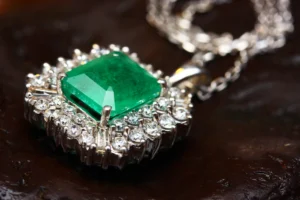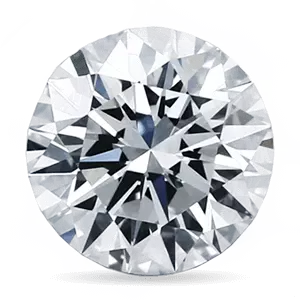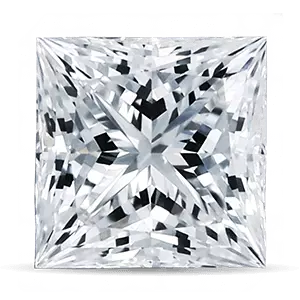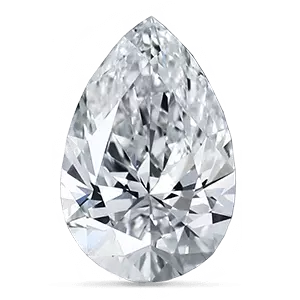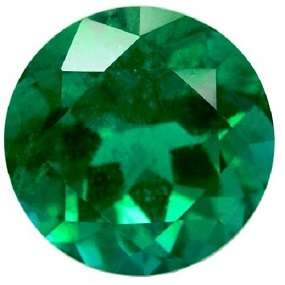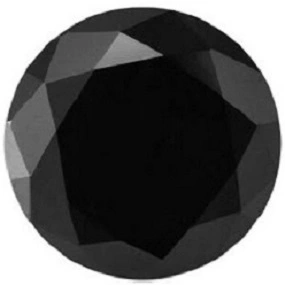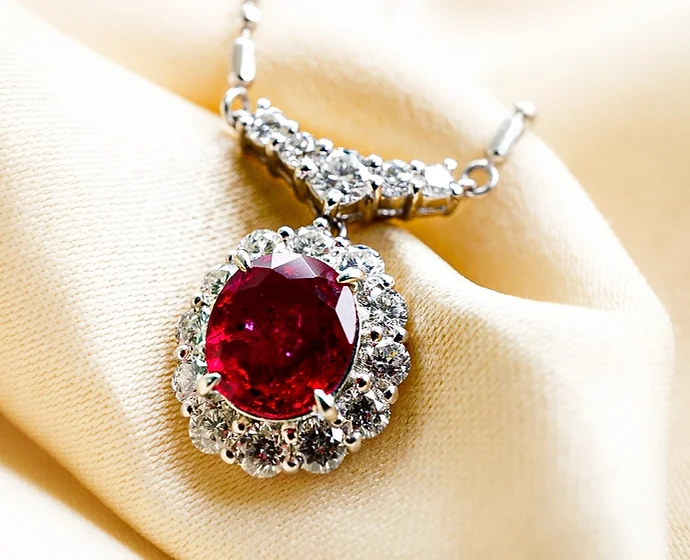Exploring Diamond Clarity: Unveiling the Brilliance Within
In the intricate process of selecting an impeccable diamond, clarity emerges as a pivotal facet that exerts a profound influence on both its intrinsic worth and captivating allure. The essence of a diamond’s clarity resides in the delicate interplay between the presence and absence of internal imperfections and external flaws.
Table of Contents
These nuanced intricacies, commonly termed as inclusions and blemishes, wield the power to wield the power to weave a narrative of brilliance that resonates through the ages, shaping its holistic visual splendor.
Embarking on an explorative journey through this all-encompassing manual, we embark on an odyssey into the heart of diamond clarity – an odyssey that unravels the enigma of the diamond clarity scale, delves deep into the myriad nuances encapsulated within distinct clarity grades, and uncovers the profound role clarity assumes in the intricate matrix of gauging diamond quality.

A Stunning Diamond Ring
The Diamond Clarity Scale or the Diamond Clarity Chart: Deciphering the Language of Clarity and Brilliance
The diamond clarity scale or the diamond clarity chart is a standardized system used to grade diamonds based on the presence and visibility of internal inclusions and external blemishes. This scale helps both consumers and professionals evaluate a diamond’s clarity, ensuring transparency and accurate communication within the diamond industry.
Likewise, the other 4 Cs have their respective scales. The grading scale empowers consumers to comprehend a diamond’s quality without needing to be gemological experts.
This knowledge enables you to confidently select a diamond that matches your preferences, while also facilitating effective communication with jewelers, ensuring that the diamond you choose meets your desires and expectations.
The clarity scale ranges from Flawless (FL), representing diamonds with no internal or external imperfections visible under 10x magnification, to Included (I1, I2, I3), indicating diamonds with significant inclusions visible to the naked eye. In between these extremes lie various grades that help determine a diamond’s overall clarity.
Each grade on the diamond clarity chart serves as a portal to a specific world within the diamond’s crystalline structure, allowing us to decipher the exquisite dance of light and shadow that defines its character. A mere glance at the chart unveils the diamond’s history, its unique journey through time and pressure, revealing the tales of imperfections and blemishes etched within its core.
Exploring Clarity Grades
Flawless (FL) and Internally Flawless (IF)
Diamonds that fall into the Flawless and Internally Flawless categories are incredibly rare and valuable. These diamonds exhibit virtually no internal or external imperfections even under high magnification. Their unparalleled clarity allows light to pass through the stone unobstructed, resulting in a breathtaking display of brilliance.
Very, Very Slightly Included (VVS1, VVS2)
Diamonds categorized as Very, Very Slightly Included feature inclusions that are extremely difficult to detect even under magnification. The VVS1 grade indicates slightly fewer inclusions compared to VVS2, but both still showcase exceptional clarity. These diamonds offer a splendid blend of beauty and value.
Very Slightly Included (VS1, VS2)
Diamonds falling within the Very Slightly Included range have minor inclusions that are relatively easy to detect under magnification but often invisible to the naked eye. These inclusions do not significantly impact the diamond’s brilliance, making VS1 and VS2 diamonds an excellent choice for those seeking a balance between quality and budget.
Slightly Included (SI1, SI2)
SI1 and SI2 diamonds contain noticeable inclusions when viewed under magnification. However, their impact on the diamond’s appearance varies. SI1 diamonds usually have inclusions that are not readily visible to the naked eye, while SI2 diamonds might have more visible inclusions.
These diamonds can provide great value for individuals looking for larger stones without compromising too much on quality.
Included (I1, I2, I3)
Diamonds with Included clarity grades have inclusions that are visible to the naked eye and can significantly affect the stone’s brilliance and transparency. While these diamonds are generally more affordable, they may not exhibit the same level of sparkle and beauty as higher clarity grades.

An Incredible Diamond Pendant
Diamond Rating Chart: Navigating the Path to Perfection
The diamond rating chart serves as a comprehensive guide that aids both novices and experts in understanding a diamond’s quality at a glance. This chart combines the 4 Cs – Cut, Color, Clarity, and Carat weight – into a visual representation that simplifies the complexity of diamond evaluation. Each factor is assigned a grade, allowing you to quickly gauge the overall quality of a diamond.
However, it’s essential to remember that no single factor should be isolated; instead, they should be considered in harmony to fully appreciate a diamond’s brilliance. The chart enables you to compare diamonds and make an informed choice, ensuring that your selected gemstone aligns with your preferences and budget.
Significance of Clarity in Diamond Quality
Diamond clarity assumes a pivotal role in the holistic assessment of a diamond’s quality and intrinsic worth. Amidst the quartet of Carat weight, Cut, Color, and Clarity – collectively known as the 4 Cs – clarity emerges as a defining factor that intimately shapes a diamond’s enchantment.
Operating as a virtuoso conductor orchestrating the symphony of light, clarity directly governs the intricate interplay of brilliance, fire, and scintillation exhibited by the gem. This interwoven dance of luminosity hinges upon the diamond’s ability to transmit and reflect light without hindrance.
Higher echelons of clarity, embodied by the likes of Flawless and Internally Flawless diamonds, herald a realm of unparalleled beauty, captivating rarity, and commanding premium valuation. In these dazzling rarities, the absence of inclusions and blemishes underpins their transcendent allure, rendering them luminary treasures coveted by connoisseurs.
Contrarily, diamonds adorned with the distinction of being Included venture into more accessible realms, reflecting diverse inclusions and blemishes that cast intriguing narratives within their cores. As a result, they extend the captivating realm of diamonds to a wider spectrum of enthusiasts, harmonizing the symphony of beauty, accessibility, and value.
Understanding Diamond Inclusions and Blemishes
Inclusions are internal imperfections within a diamond, while blemishes are external flaws. Inclusions can include minerals, fractures, or other crystals trapped within the diamond during its formation. Blemishes, on the other hand, can range from scratches and nicks to polish lines and chips on the diamond’s surface.
Understanding these imperfections is essential when selecting a diamond. The location, size, type, and number of inclusions and blemishes affect the diamond’s clarity grade and its overall appearance. Work closely with a reputable jeweler to evaluate diamonds and make an informed choice based on your preferences and budget.
Choosing the Right Diamond Clarity Grade
Selecting the ideal diamond clarity grade involves finding a balance between your desired diamond appearance and your budget. Keep the following points in mind:
Consider Your Priorities: If you value brilliance and fire above all else, you might consider investing in a higher clarity grade diamond. However, if size is your priority, you could opt for a slightly lower clarity grade without compromising too much on overall beauty.
Magnification Matters: While certain inclusions might be visible under magnification, they might not be noticeable to the naked eye. Choose a clarity grade that aligns with your comfort level regarding visible imperfections.
Engagement Ring Vs. Other Jewelry: The type of jewelry can influence the recommended clarity grade. An engagement ring, for instance, might benefit from a higher clarity grade due to its prominent position on the hand, while other jewelry pieces could accommodate slightly lower grades.

Magnificent Diamond Earrings
Decoding Common Diamond Clarity Terms: SI1, VS2, and More
SI1 Diamond
SI1 diamonds, or Slightly Included 1 diamonds, have inclusions that are generally not visible to the naked eye. They offer a balance between quality and value, making them a popular choice among buyers seeking diamonds with good clarity without breaking the bank.
VS2 Diamond
VS2 diamonds, or Very Slightly Included 2 diamonds, contain inclusions that are typically not visible without magnification. These diamonds present a wonderful option for those who want excellent clarity without the premium price associated with higher grades.
VS1 Clarity
VS1 clarity diamonds are on the upper end of the Very Slightly Included category. Their inclusions are very minor and often require magnification to be seen. VS1 diamonds offer a remarkable compromise between clarity and affordability.
I1 Diamond
I1 diamonds, or Included 1 diamonds, have inclusions that are visible to the naked eye. While they are the lowest grade in terms of clarity, they can still be attractive choices for budget-conscious shoppers who prioritize size over absolute clarity.
VVS2 Clarity
VVS2 diamonds belong to the Very, Very Slightly Included category. They exhibit inclusions that are challenging to detect even under magnification. These diamonds provide a stunning display of brilliance and are considered excellent choices for engagement rings and other jewelry pieces.
SI2 Diamond
SI2 diamonds, or Slightly Included 2 diamonds, offer a smart compromise between cost and beauty. Their visible inclusions under magnification might not be apparent to the naked eye, making them a wallet-friendly option that doesn’t sacrifice overall charm.
By carefully selecting SI2 diamonds with minimal and inconspicuous inclusions, you can enjoy a larger stone without compromising on everyday elegance.
I2 Diamond Clarity
I2 diamond clarity strikes a balance between size and budget. These diamonds feature visible inclusions that can impact brilliance. Suited for those desiring a larger diamond without overspending, I2 clarity offers a cost-effective choice. Expert guidance aids in selecting an I2 diamond that aligns with your preferences, providing an alluring gemstone within your financial range.
I3 Diamond
I3 diamonds provide budget-friendly options with visible inclusions. While their brilliance may vary, they’re a great choice for those seeking a larger diamond without a hefty price tag. These diamonds cater to size-conscious buyers while maintaining affordability. Consulting with experts can help you select an I3 diamond that aligns with your preferences and ensures an appealing gemstone within your budget.
The Best Diamond Clarity
The pursuit of the best diamond clarity leads us to the realm of exceptional brilliance and unrivaled beauty. Among the various clarity grades, Flawless (FL) and Internally Flawless (IF) diamonds stand as paragons of perfection, showcasing no visible inclusions or blemishes even under magnification.
These diamonds capture and reflect light with unparalleled purity, offering a mesmerizing display of radiance. While Flawless diamonds epitomize the pinnacle of clarity, Very, Very Slightly Included (VVS1, VVS2) diamonds also hold their own, with minute inclusions that are nearly imperceptible.
These grades, among others on the clarity scale, present a stunning spectrum of options for those in pursuit of the ultimate diamond clarity.

Emerald Diamond Gold Ring
Final Thoughts
The captivating domain of diamond clarity intricately unveils the hidden universe encapsulated within these mesmerizing gemstones. It guides us through a narrative woven with tales of Flawless diamonds, embodying unparalleled purity that mirrors the celestial luminosity of stars.
In stark contrast, Slightly Included diamonds offer a delicate ballet of light and shadow, exuding a unique charisma that adds character to their beauty.
Each clarity grade weaves its own distinctive story, painting a vivid picture of a diamond’s journey through time and pressure, ultimately shaping its scintillating identity. Understanding the profound implications of clarity opens the door to an enriched appreciation of a diamond’s allure.
Deciphering the intricate nuances of the diamond clarity chart transforms it from mere data to a map of the diamond’s inner topography, leading us through its microscopic terrains. As we familiarize ourselves with terms like VS2, the mystique of diamond clarity unfolds, revealing the spectrum of possibilities that await within this enchanting world of gemstones.
FAQs About Diamond Clarity
Feel free to explore these questions to gain a deeper understanding of diamond clarity and make informed decisions when selecting the perfect diamond for your needs and desires.
Diamond clarity refers to the presence of internal inclusions and external blemishes in a diamond. It impacts the diamond's brilliance and overall appearance. Higher clarity diamonds, like Flawless (FL), are rarer and command higher prices due to their exceptional purity and value.
Diamond clarity is graded using a scale ranging from Flawless (FL) to Included (I1, I2, I3). The clarity scale helps assess a diamond's imperfections under 10x magnification. It's a standardized system that aids both consumers and industry professionals in evaluating diamond quality.
Diamond inclusions are internal flaws like minerals or fractures. Blemishes are external marks such as scratches. Inclusions and blemishes impact a diamond's clarity grade, affecting its appearance. Higher clarity diamonds have fewer visible imperfections, enhancing brilliance.
The ideal clarity grade depends on personal preferences and budget. Very Slightly Included (VS1, VS2) and Slightly Included (SI1, SI2) diamonds offer excellent value. They balance clarity and cost, providing visually appealing options without the premium price of Flawless diamonds.
Inclusions' visibility varies across clarity grades. Flawless (FL) diamonds have no visible inclusions even under magnification. Very Slightly Included (VVS1, VVS2) diamonds have nearly imperceptible inclusions.
Very Slightly Included (VS1, VS2) diamonds have minor inclusions that are often invisible to the naked eye.
Slightly Included (SI1, SI2) diamonds may have visible inclusions under magnification but are usually not noticeable without a loupe. Included (I1, I2, I3) diamonds have visible inclusions that impact the diamond's appearance.
The primary factors influencing diamond clarity include the size, number, position, and type of inclusions and blemishes. Larger, more numerous, and centrally located imperfections tend to lower a diamond's clarity grade. The type of inclusion, such as a feather or a crystal, also plays a role.
Inclusions can obstruct the path of light within a diamond, scattering and refracting it irregularly. This can hinder the diamond's ability to reflect light and create the dazzling sparkle it's renowned for. Blemishes on the diamond's surface can also diffuse light, affecting its overall brilliance and fire.
Absolutely. Many diamonds with slightly lower clarity grades, such as SI1 or SI2, can still appear stunning to the naked eye. The key is to select a diamond with inclusions that are not readily noticeable without magnification. This allows you to balance clarity and budget while still enjoying a beautiful diamond.
The choice of setting can be influenced by a diamond's clarity. For instance, if you have a diamond with a higher clarity grade, a setting that exposes more of the diamond's facets can enhance its brilliance. On the other hand, a lower clarity diamond might benefit from a setting that minimizes the visibility of its inclusions.
A diamond's clarity is generally a stable characteristic and doesn't change over time. However, if a diamond is subjected to extreme conditions, such as high heat or pressure, it's possible for existing inclusions to become more visible or for new imperfections to develop. Proper care and maintenance can help preserve a diamond's clarity over the years.

